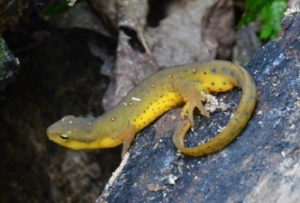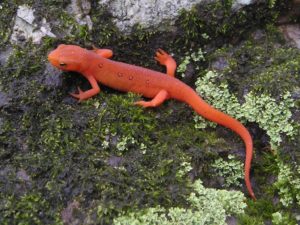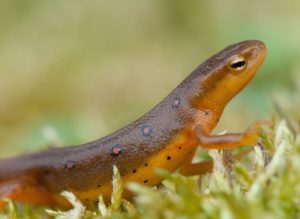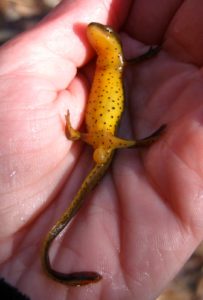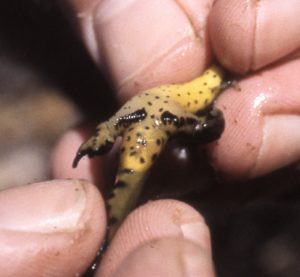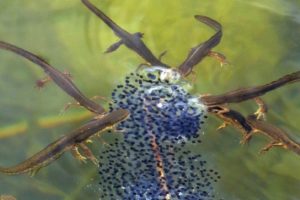Notophthalmus viridescens
Identification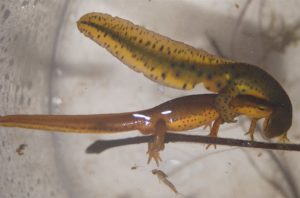
The Eastern Newt as a terrestrial juvenile is reddish-orange with slightly bumpy skin.
As an aquatic adult, the Eastern Newt turns olive green and their bellies reveal scattered black spots on a bright yellow background. They reach 5 inches in length.
Juveniles and adults both have a dark horizontal line going through their eyes and rows of red spots outlined in black along their backs.
Get more detailed identification and life history information by downloading the chart here.
You can learn more about this species and see some video footage by checking out this clip from our Rattlers, Peepers & Snappers DVD.
Range/Habitat
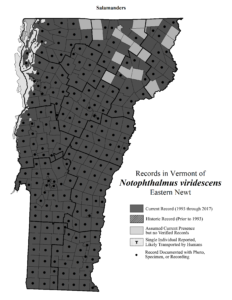
[ click image to zoom | download printable PDF ]

[ click image to zoom | download printable PDF ]
The juveniles, called red efts, live on land for up to eight years. As an adult they return to the permanent water of beaver ponds, small lakes, man-made ponds, or marshes, where they breed and lay their eggs individually on underwater vegetation.
The Eastern Newt is fairly common almost statewide in hardwood forests but requires large mosaics of interconnected hardwoods and wetlands. It is difficult to find in coniferous uplands and the spruce-fir forests of the Northeast Kingdom.
Status
This species has a state natural heritage rank of S5. Please report sightings of this species in Vermont if you have not reported them within the last five years from a given location. Any natural history observations (feeding, migrations, road crossing areas, early or late season appearance, abnormalities, etc.) are appreciated. Photographs are always helpful, particularly if your report is the first report of this species from a town.
Additional Photos
More Info
- Notophthalmus viridescens at Animal Diversity website
- Notophthalmus viridescens at Amphibiaweb
- Notophthalmus viridescens at the Canadian Herpetological Society website
- Notophthalmus viridescens at the Yale Peabody Museum of Natural History website
Species summary written by Ariel K. McK. Burgess.

